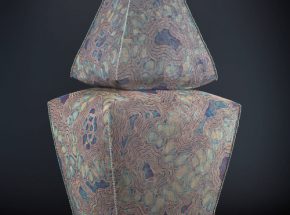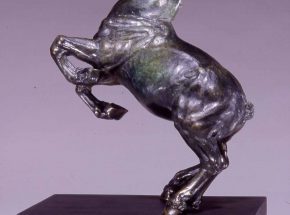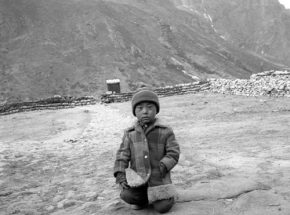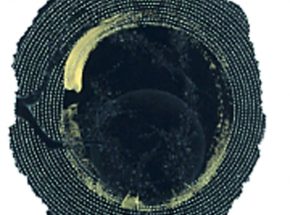
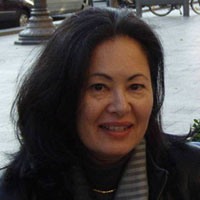
Polarity, tension, and organic balance are dynamics that have slowly been identified as I study the nature of dualities and the conditions for wholeness. The tensions inherent in cultural diversity harmonize by innovating new applications that blend Western with Japanese art techniques, while retaining the integrity of the textile traditions I use. It is the process of mutual transformation and integration. The objects I create express and manifest those things within me beyond words.
I learned many traditional Japanese art, sashiko, running-stitch embroidery; temari, embroidered balls; shibori, tie dying; and bookbinding from my mother and her brother in Tokyo. Learning these arts are special gifts, because they have become the non-verbal vehicles to express those things within myself for which there are no words. It is the structure of the cyclic process through which my sense of self and spirituality evolve.
The life of disciplined practice, particularly in the studio, is spiritual. All things, animate and inanimate, are interdependently connected. My work teaches me about the nature of these relationships so that I can better understand them in an effort to live compassionately with all diversities, whether they are my birthright dualities or those far beyond myself. The meditative nature of ongoing practice in the studio facilitates the synthesis of life experiences and revelations into my sense of self and spirituality.
The Japanese and American aspects of me will forever converse and develop areas of synthesis with tension between them being a catalyst. These dialogues bring me closer to understanding unity and being whole, and the works manifest this process of exploration, discovery and understanding by recording my growth through tangible forms. It is patience, disciplined practice, and faith that enable me to meet the challenges of this journey.
To study the Way is to study the self.
To study the self is to forget the self.
To forget the self is to be enlightened by all things.
To be enlightened by all things is to remove the barriers
Between one’s self and others.
Dogen, the founder of Soto Zen Buddhism in Japan (1200-1252 A.D.)
The study of the self is a pursuit initiated by my parents when, at the age of fifteen, they sent my to school in Japan to learn firsthand about my mother’s culture. This was the beginning of my journey to learn about the diverse parts of me, and integrate them into an understanding and feeling of belonging. As I sat on the edge of a Tokyo high rise building, looking out upon a constellation of evening lights, I realized that to take life and to live life is the same effort; it is the effort of the self. With this clarity I got up and began the journey that I am now on.
Along this journey I have learned that many of my dualities can and often do polarize. The more I examine my life experiences and feelings, the more I observe that the dynamics of them are the same as all people and things in life. This liberating and humbling revelation deepens my awareness that life and the sense of self is shared as a universal truth. To know that I am not alone gives me a strong sense of who I am within the greatest context of life, despite all the differences in appearances, circumstances and environments.
I look at the whorls of a thumbprint and see how much they are like the circuitous path inward towards self-knowledge and acceptance. The thumb is a reminder that we are all on a journey, going into and out of ourselves. Our journeys are as unique as the whorl patterns, yet we share with everyone our human experience. It is my hope that our individual experiences can inspire compassion for other and extend to all living things.
My work is about personal experiences informing and connecting beyond the self, at once both intimately reflective and graphically dynamic. The non-representational painting, gilding, stitching, and materials are evocative and responsive expressions of being human. The work embodies the reminder that diversity can be a catalyst for conversation that can be loud, and subtle, and yield resolution to conflicts that are beautiful, respectful of traditions and transformed by innovations.
Website
http://www.sla.purdue.edu/waaw


![Lucy Arai, 2000.1, paper, sashiko [Japanese running stich embroidery] gold acrylic, 48 x 48 in. (121.9 x 121.9 cm) framed, Lent by the artist Washington DC and Oakley, California](http://34.233.127.17/wp-content/uploads/cache/remote/uss58003-s3-amazonaws-com/2014121554.jpg)
![Lucy Arai, 2000.2, paper, sashiko [Japanese running stich embroidery] gold acrylic, 48 x 48 in. (121.9 x 121.9 cm) framed, Lent by the artist Washington, DC and Oakley, California](http://34.233.127.17/wp-content/uploads/cache/remote/uss58003-s3-amazonaws-com/3658717278.jpg)


